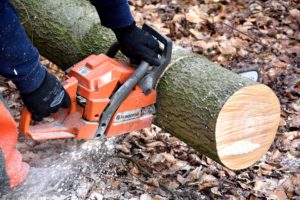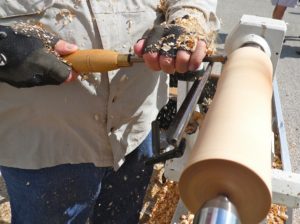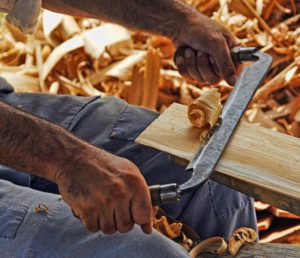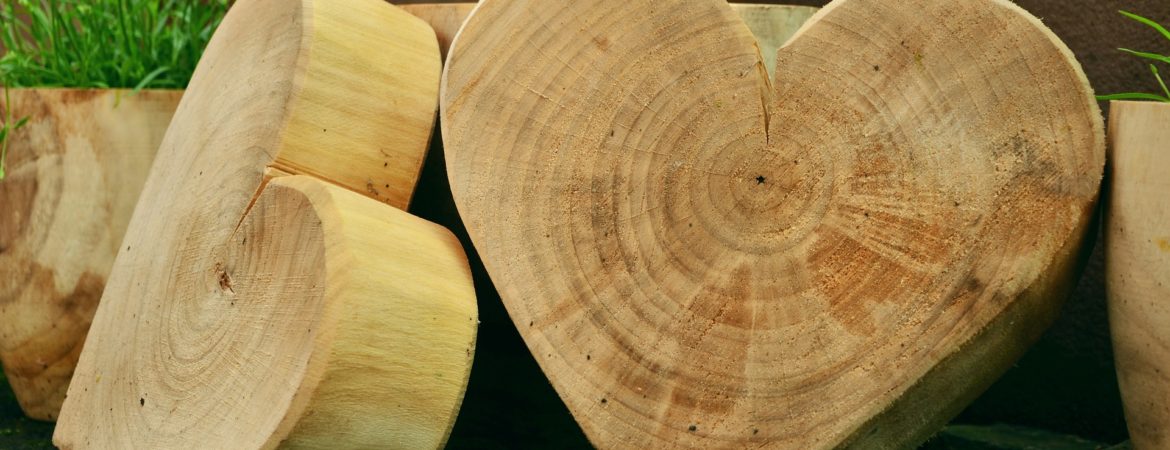Carpentry is a valuable skill indeed. You can turn woodblocks into beautiful ornaments, sculpture, and pieces of furniture if you have the right carpentry skills. Building a garden shed house renovation also require some degree of knowledge about woodwork. There is nothing to lose if you decide to be interested in the craftsmanship.
But before stepping up your game, knowing the basics about wood craftsmanship is vital. You should learn to walk before you can run. And here, you have come to the right place.
Fetching the Wood
 Although it might sound too much for carpentry business, knowing how to fetch and chop wood is a must. We can learn about many things of carpentry from the very moment of chainsawing a tree and turning it into woodblocks. A rough cut on the blocks can damage the internal structure, and they can no longer be a sturdy wood for furniture. Uneven size and improper fall of the tree may also cause a problem during the woodcarving section.
Although it might sound too much for carpentry business, knowing how to fetch and chop wood is a must. We can learn about many things of carpentry from the very moment of chainsawing a tree and turning it into woodblocks. A rough cut on the blocks can damage the internal structure, and they can no longer be a sturdy wood for furniture. Uneven size and improper fall of the tree may also cause a problem during the woodcarving section.
Knowing the difference between a gas and electric chainsaw is vital. Electric chainsaws aren’t always the best, but they have a few key advantages over gas models. Gas chainsaws are thought to be the most powerful tool in the wood-cutting business, but the electric chainsaws are slowly catching up.
Setting Up the Workbench
If you want to carve wood, you are going to need a lot of tools at your woodshop. Below is a list of them:
- Gouges
- Chisels
- Carving Knives
- V-tool
- Sharpeners
- Carving Gloves
- Thumb Guards
 Those are the carving tools to make detailed carvings on the wood piece. But for processing the large woodblocks, you are going to need:
Those are the carving tools to make detailed carvings on the wood piece. But for processing the large woodblocks, you are going to need:
- Jointer
- Circular Saw
- Miter Saw
- Routing Tools
- Jigsaw
- Handsaw
Once you have them all, the next thing you should think of is how you are going to store them. Most of the tools above can be dangerous if some kids have access to them. It is best if you leave your woodshop locked whenever unused. And everything should be stored in an organized way. You do not want to get injured by accidentally stepping on scattered screws or nails.
Organizing the Blueprints
 First and foremost, you should not do any project without creating a blueprint first. Blueprints keep you on the right track of making things with detailed precision. They also allow you to evaluate how advanced you carpentry skills have become.
First and foremost, you should not do any project without creating a blueprint first. Blueprints keep you on the right track of making things with detailed precision. They also allow you to evaluate how advanced you carpentry skills have become.
Do not count everything on your memory, even if you claim to have a strong one. Professionals do not create woodcrafts out of the blue. Their excellence is a result of meticulous discipline in following the procedures of a blueprint.

